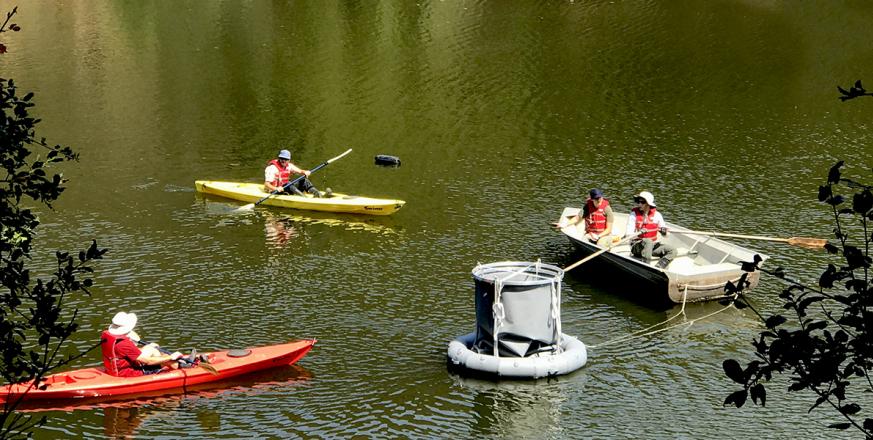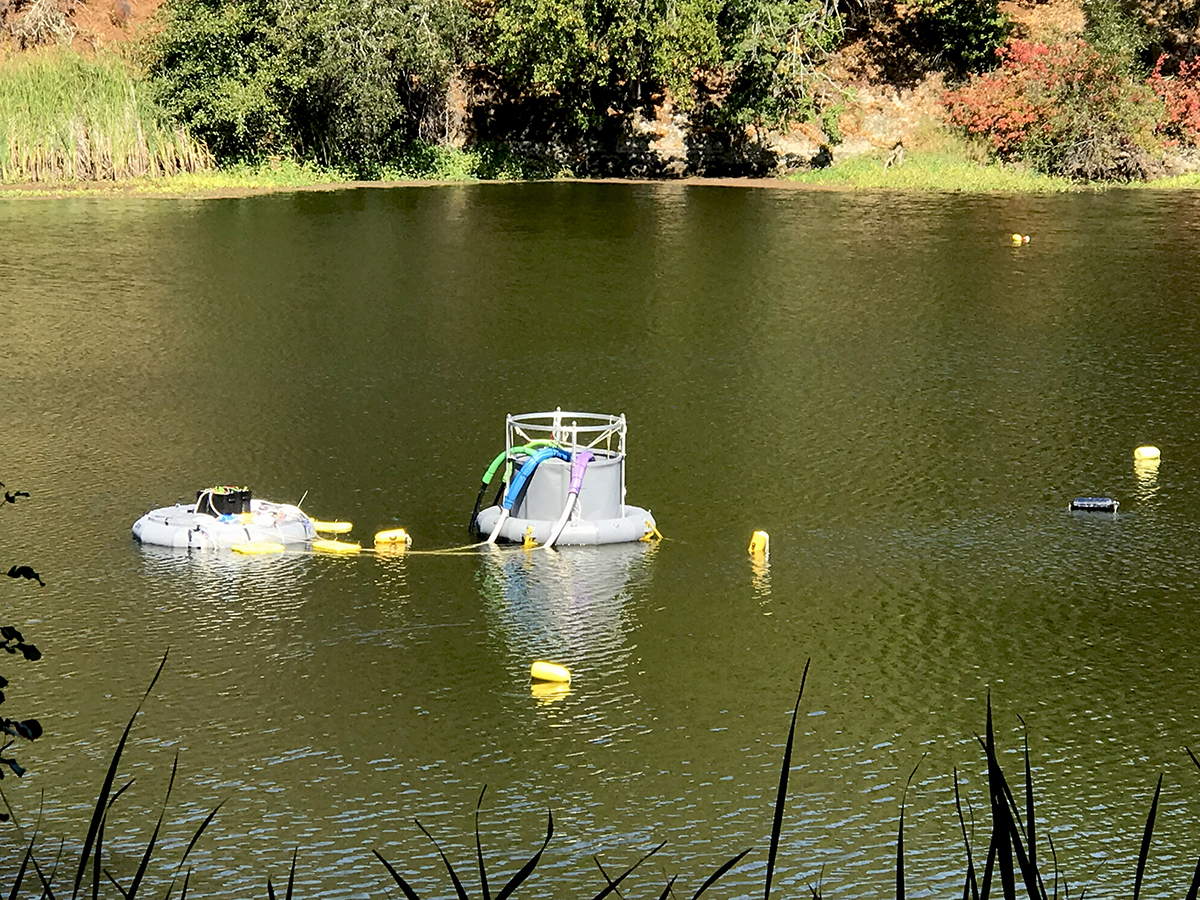Replenishing oxygen in Searsville Reservoir bottom waters via augmented downwelling

Researchers David Koweek, Clara Garcia-Sanchez, and Ken Caldeira, from the Carnegie Institution for Science and Stanford University, are using Searsville Reservoir as a model system to test a new method for reversing hypoxia, or low dissolved oxygen, in aquatic ecosystems. Hypoxia occurs naturally when decomposition of organic matter consumes oxygen in bottom waters and there is insufficient mixing with well-oxygenated surface water. Hypoxia deprives fish of oxygen and threatens ecological functioning of both freshwater and marine ecosystems. Existing methods for replenishing the oxygen in bottom waters, such as aeration, are energy intensive or not very effective.
The experiment by Koweek and colleagues tests a novel, energy-efficient method of pumping surface water to the lake bottom, generating a vertical circulation pattern. They are measuring the effectiveness of their technique with an array of sensors that track the concentration of dissolved oxygen, temperature, and lake currents in both the surface and deep waters at various distances from the pump. The Searsville experiment will continue until early October.
 Above: Initial deployment of the augmented downwelling experiment, with battery-operated pumps floating at left, the downwelling tube at center, and yellow buoys marking sensor locations.
Above: Initial deployment of the augmented downwelling experiment, with battery-operated pumps floating at left, the downwelling tube at center, and yellow buoys marking sensor locations.
The longer term goal is to use the results from the Searsville experiment to inform models and techniques for surface water pumping that can be applied to much larger water bodies, including marine ecosystems, and especially areas where excess nutrients from fertilizer runoff or pollutants fuel algal blooms that can lead to “dead zones.”
Another major theme of Koweek’s research is ocean acidification, including studies of coral reef calcification and using seagrass meadows to buffer coastal acidification.



